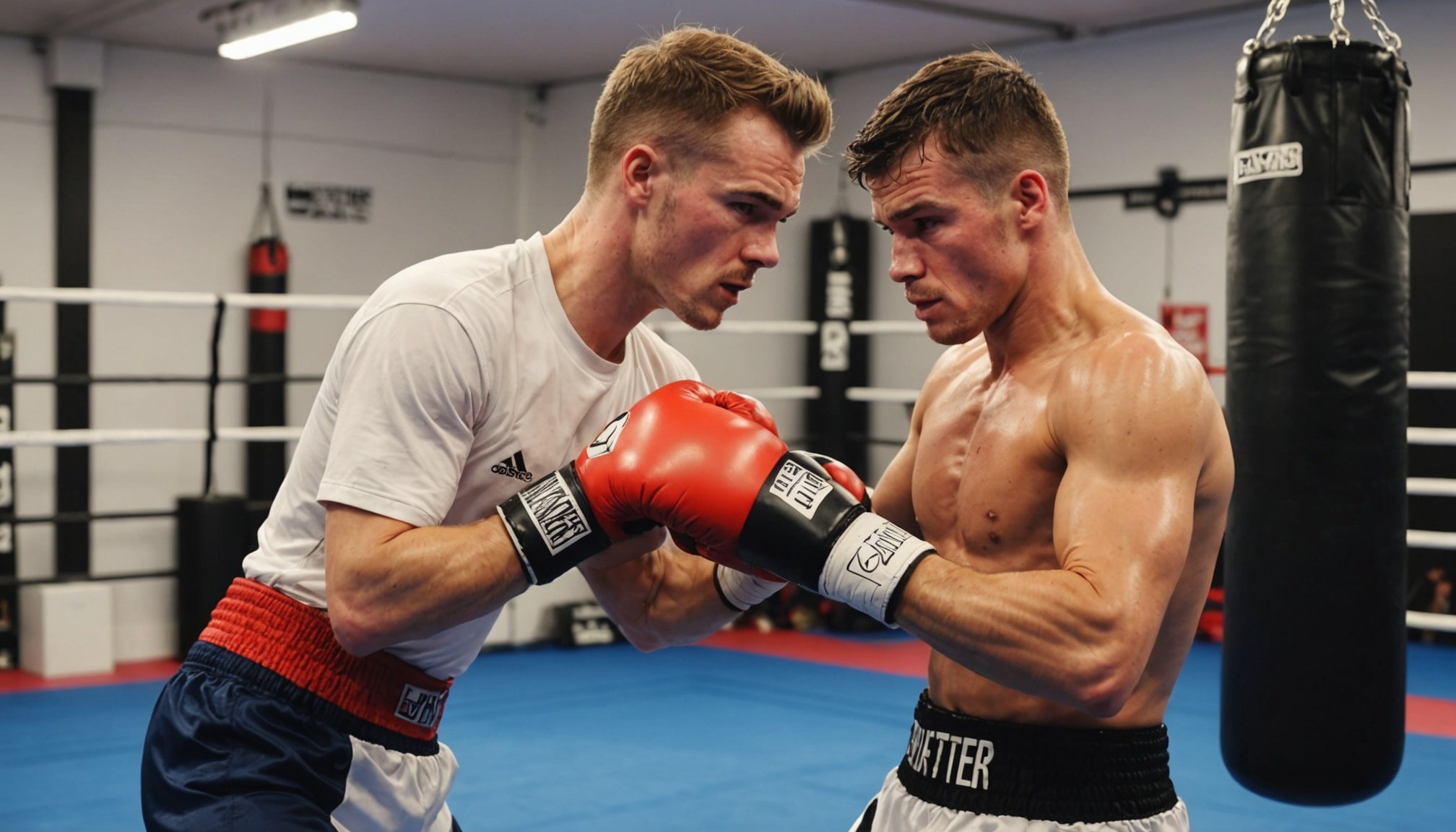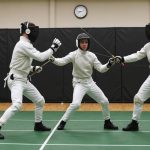Importance of Head Movement in Boxing
Understanding head movement is crucial for both boxing defense and offense. It plays a pivotal role in keeping a boxer elusive and difficult to hit, especially when you consider that a stationary target is much simpler to land punches on. By effectively incorporating head movement, boxers can dodge punches, thus providing a robust defensive strategy. This not only reduces the chances of injury but also contributes to maintaining balance and readiness in the ring.
On the offensive front, head movement isn’t just about avoiding hits; it’s also a powerful tool for creating opportunities. By combining movement with timing and rhythm, a boxer can swiftly position themselves to deliver precise counterattacks. This dynamic approach can often catch opponents off guard, turning a defensive technique into an advantageous offensive strategy.
Also read : Essential ankle support techniques for uk muay thai fighters: elevate your performance and prevent injuries
Moreover, effective head movement lays the groundwork for exploiting openings in the opponent’s guard. When done correctly, it can throw off an opponent’s rhythm, make them miss, and create clear paths for effective strikes. In essence, mastering head movement enhances a boxer’s ability to anticipate and react to opponents’ actions, establishing superiority in both offense and defense.
Basic Techniques for Mastering Head Movement
Understanding foundational head movement techniques is vital in boxing, enhancing both defensive and offensive skills. Mastering these techniques requires dedication to boxing fundamentals.
This might interest you : Explore the best orbi guns: top electric gel blasters unveiled
Slip
Slipping is a fundamental move, pivoting the head slightly to evade punches. This technique requires a boxer to anticipate the punch direction, shifting weight minimally yet effectively. Key points include maintaining balance and readiness to counterstrike. Avoid common mistakes like excessive bending, which can disrupt balance.
Bob and Weave
Bob and weave involves dipping the knees and swaying the upper body to dodge punches. It’s crucial for maintaining close range while avoiding attacks. Focus on smooth transitions between movements to stay agile. Common errors include over-dipping, which can slow reactions and lower visibility.
Roll
Rolling entails rotating the shoulders to deflect punches, especially hooks. This technique allows seamless transitions between defensive and offensive maneuvers. For effectiveness, synchronise rolling with opponent movements and maintain an upright posture. Errors such as leaning excessively can leave openings.
Refining these techniques often requires incorporating movement drills and deliberate practice, emphasizing precision and timing for optimal success in both boxing defense and offense.
Advanced Head Movement Techniques
Advanced head movement techniques in boxing can elevate your skill level, and these methods often involve combining evasive maneuvers with precise timing and rhythm. One essential aspect is integrating head movement with footwork, allowing boxers to manoeuvre fluidly around the ring while maintaining optimal positioning. This synergy not only enhances agility but also reinforces defensive capabilities by enabling boxers to quickly evade attacks.
In addition, counterattacking with movement is a critical component of advanced strategies. By using head movement to slip past an opponent’s punch, boxers can create opportunities to deliver effective counterstrikes. Timing is crucial here, as the effectiveness of a counter relies on the ability to anticipate the opponent’s actions and respond swiftly.
Integrating head movement in sparring sessions is also indispensable for developing these skills. Sparring provides a real-world application, helping boxers adapt to various fighting styles and scenarios. During such sessions, it’s vital to focus on synchronising head movements with reflexive defensive actions to enhance both offensive and defensive strategies.
Overall, these advanced techniques require an understanding of the interplay between head movement and other boxing fundamentals, ensuring that boxers can execute these moves proficiently during competitive bouts.
Drills to Enhance Head Movement Skills
Improving head movement skills is essential for progressing in boxing, and incorporating dedicated boxing drills into training routines can significantly boost both offense and defense. These drills help build muscle memory and sharp reflexes for effective evasive maneuvers.
Key Drills for Head Movement
Developing skills starts with simple drills, such as pendulum swings, where a bag mimics an opponent’s punches. This teaches rhythm and timing as one practices slipping and weaving. Another fundamental exercise, the mirror drill, involves shadow boxing while focusing on head movements.
Progressive Variations
As proficiency grows, incorporate progressive variations like the “slip bag” drill, which combines timing and rhythm. Here, the bag’s movement encourages dynamic head motion, refining defensive techniques. Advance by adding footwork to make these drills more challenging and realistic.
Consistency and Practice
The effectiveness of training exercises relies heavily on regular practice. Dedicate specific sessions purely to these drills to develop a natural instinct for head movement. Regular drills fine-tune both anticipation and reaction speed, consolidating the core skills needed in high-pressure situations.
By committing to these exercises, boxers lay a robust foundation for applying advanced head movement techniques in competitive environments.
Expert Insights from UK Boxing Trainers
Gaining valuable insights from renowned boxing trainers is instrumental for mastering head movement, a critical skill set in the ring. Trainers in the UK, with their rich tradition in the sport, offer nuanced perspectives on effectively integrating head movement into both offensive and defensive strategies.
Interviews or Quotes from Notable Trainers
One well-known trainer emphasizes that “head movement is the foundation of effective boxing defense.” This highlights its role in making fighters less predictable and harder to hit. According to trainers, incorporating UK boxing techniques, such as evasive maneuvers, can significantly elevate a boxer’s performance. They often stress the importance of synchronizing movements with punches to maintain offensive pressure while staying defensively solid.
Training Programs or Camps Focused on Head Movement
For boxers keen on enhancing their skills, training camps dedicated to head movement are invaluable. They provide structured environments where focus on UK boxing techniques can deepen one’s understanding and execution. Trainers recommend programs that blend traditional exercises with modern methodologies to cater to diverse skill levels. These programs emphasize expert advice tailored to individual fighter needs, fostering significant improvement through personalized coaching.
Video Demonstrations to Visualize Techniques
Learning boxing techniques can be significantly enhanced through the use of video tutorials. These resources provide a clear, visual representation of head movement skills, helping boxers understand intricacies that might be overlooked in textual descriptions alone. Video demonstrations allow you to see the exact positioning, timing, and rhythm necessary for executing movements like slipping, bobbing, and weaving.
Recommended Resources
Several boxing platforms and YouTube channels offer comprehensive boxing technique videos. These videos often break down complex movements step-by-step, making them accessible for both beginners and advanced practitioners seeking to refine their skills. Platforms offering instructional content from professional boxers and coaches are particularly valuable as they combine expert insights with real-world applications.
Importance of Visual Aids
Engaging with visual learning tools aids in reinforcing the connection between theoretical knowledge and practical execution. Watching the techniques performed provides an opportunity to observe common mistakes and how to correct them. It also serves as a feedback mechanism when you record your practice sessions and compare your movements with demonstrated techniques.
Incorporating these resources into your training routine allows you to analyse your performance improvement over time, fostering continuous learning and skill enhancement.
Related Resources for Continued Learning
Navigating the world of boxing requires access to comprehensive boxing resources that cater to ongoing skill development.
Books and Manuals on Boxing Techniques
Numerous books and manuals offer in-depth exploration of boxing techniques, making them invaluable additional training materials. Renowned publications often detail fundamentals to advanced tactics, helping both novices and seasoned athletes refine their head movement and other skills. Reading these resources not only provides theoretical knowledge but also broadens understanding of various strategies used by top-tier professionals.
Online Training Programs and Courses
For those seeking dynamic learning environments, online training programs provide structured yet flexible modules on boxing techniques. These courses frequently include performance improvement metrics, enabling boxers to track their progress over time. Guided tutorials, often led by experienced trainers, offer personalized feedback, ensuring effective skill acquisition. Participants can engage with a community of like-minded individuals, fostering a collaborative atmosphere for continued growth.
Incorporating a mix of boxing resources—from books to online platforms—enhances learning, encouraging athletes to integrate new insights into their routines. By consistently challenging oneself with diverse training tools, boxers remain competitive and informed, ensuring steady performance improvement.











